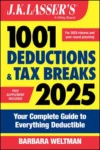Questions Answered About Some Retirement Plan Changes
The IRS has released extensive questions and answers that address some changes made by the Setting Every Community Up for Retirement Enhancement Act of 2019 (SECURE Act and the Bipartisan American Miners Act of 2019 (Miners Act), both of which were part of the Further Consolidated Appropriations Act, 2020 (Notice 2020-68).
IRA contributions
The SECURE Act removed the age cap on making contributions to traditional IRAs. The Act did not change the age 70½ threshold for making qualified charitable distributions (QCDs) from IRAs to public charities; such transfers are tax free. The IRS makes it clear that individuals who continue to work and make IRA contributions must reduce the maximum $100,000 annual QCD limit by such contributions.
For example, an individual who turned age 70½ before 2020 deducts $5,000 for IRA contributions for each of 2020 and 2021 but makes no contribution for 2022. The individual makes no QCDs for 2020 and makes QCDs of $6,000 for 2021 and $6,500 for 2022. The excludable amount of QCDs for 2021 is the $6,000 of QCDs reduced by the $10,000 aggregate amount of post-age 70½ contributions for 2021 and earlier taxable years. For this individual, these amounts are $5,000 for each of 2020 and 2021, resulting in no excludable amount of QCDs for 2021 (that is, $6,000 – $10,000 = ($4,000)). The excludable amount of the QCDs for 2022 is the $6,500 of QCDs reduced by the portion of the $10,000 aggregate amount of post-age 70½ contributions deducted that did not reduce the excludable portion of the QCDs for earlier taxable years. Thus, $6,000 of the aggregate amount of post-age 70½ contributions deducted does not apply for 2022 because that amount has reduced the excludable amount of QCDs for 2021. The remaining $4,000 of the aggregate amount of post-age 70½ contributions deducted reduces the excludable amount of any QCDs for subsequent taxable years. Accordingly, the excludable amount of the QCDs for 2022 is $2,500 ($6,500 – $4,000 = $2,500). Because the $4,000 amount reduced the excludable amount of QCDs for 2022, that $4,000 amount does not apply again in later years, and no amount of post-age 70½ contributions remains to reduce the excludable amount of QCDs for subsequent taxable years.
Be aware that just because the law now permits IRA contributions after age 70½, financial institutions are not required to accept them. If they do, they must amend their IRA contracts and provide a copy of the changes to you.
Individuals taking required minimum distributions from their IRAs cannot offset them by post-age 70½ contributions to the accounts. They are separate transactions.
10% penalty exception for birth or adoption expenses
The SECURE Act added an exception to the 10% early distribution penalty for qualified birth or adoption expenses up to $5,000 from a qualified retirement plan (other than a defined benefit plan) or IRA. These are distributions made within the one-year period beginning on the date the child is born or adopted. The parent must include the child’s taxpayer identification number (e.g., Social Security number) on the return for the year in which the distribution is made. This penalty exception does not apply to an individual who adopts a spouse’s child. Each parent can rely on the penalty exception up to $5,000 with respect to the same child. If there are multiple births or adoptions (e.g., twins), the dollar limit applies per child. For example, if an employee has twins in 2020, a distribution up to $10,000 ($5,000 x 2) within the one-year period of birth is exempt from the penalty.
While such distributions are includible in gross income, they can be recontributed to the plan. They can be rolled over to another plan.
Again, the retirement plan is not required to permit in-service distributions for birth or adoption expenses. The plan would have to be amended if it permits them.
In-service distributions
The Miners Act lowered the age for in-service distributions from qualified defined benefit (pension) plans from age 62 to 59½. This allows employees who continue to work for an employer to receive pre-retirement plan distributions. Again, plans are not required to reduce the age for in-service distributions and must notify participants if they do.
Amortization of intangibles
Writing off an investment in intangible assets over the projected life of the assets.



